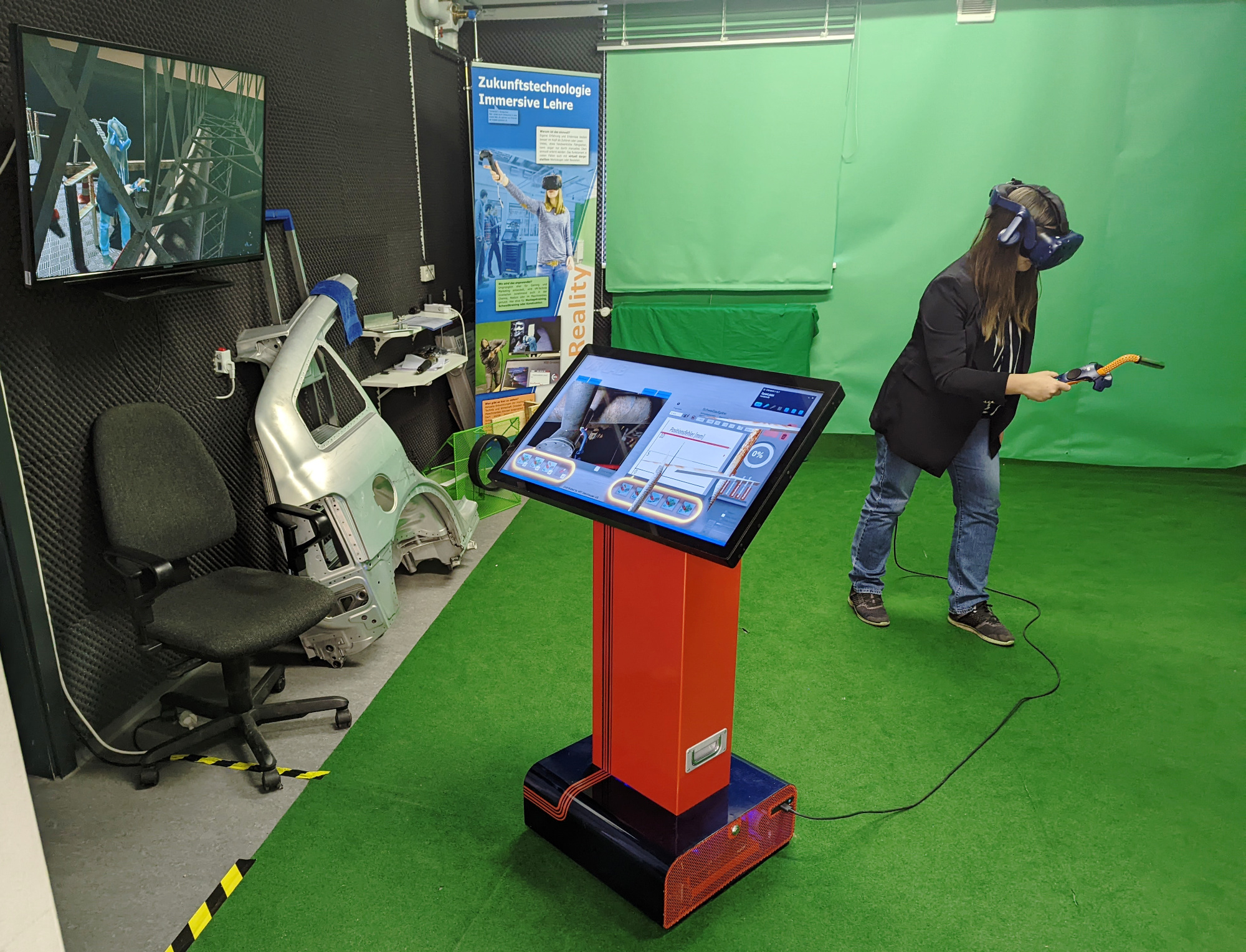Immersive University Initiative
The Immersive University is an initiative of several HTWD lecturers who are involved in the use of XR elements in active teaching and research. The initiative is currently led by Prof. Göbel. The following content shows examples from the group's activities.
Virtual Welding is part of the standard practical courses for students in mechanical engineering. It is used to facilitate and speed up learning of manual welding. Users must test their welding skill in different, increasingly complicated welding situations while beeing monitored by the software and their peers in a learning group. Due to the precise analysis of their hand movements within the system it is possible to help beginners much better than in a real learning environment. Subseqent real welding lessons round up the experience, as VR cannot simulate all aspects of welding (heat, smell…).
MOF-VR is a virtual reality program for performing interactive state-of-the-art molecular dynamics simulations in metal-organic frameworks (MOFs) and visualizing atomic or molecular trajectories. This facilitates the interpretation of three-dimensional trajectories and is useful to study the diffusion and adsorption of guest molecules in rigid metal-organic frameworks. MOF-VR contains three subroutines: a construction routine to create hypothetical MOFs by hand, a molecular dynamics suite, and a trajectory visualizer. As the molecular simulations provide reliable data, it can be used by scientists in research. MOF VR can also enrich teaching, as complex three-dimensional structures as well as guest molecules and diffusion and adsorption mechanisms inside of porous solids can be clearly visualized [1].
[1] A. v. Wedelstedt, G. Göbel, G. Kalies: MOF-VR: A Virtual Reality Program for Performing and Visualizing Immersive Molecular Dynamics Simulations of Guest Molecules in Metal−Organic Frameworks, J. Chem. Inf. Model. 62(5) (2022) 1154–1159
The intuitive and effective communication of important information plays a major role in logistics and production environments. Operators must be able to call up current information on the status of their systems as quickly and precisely as possible. One approach is the use of augmented reality to visualize invisible status variables directly on the object, such as the exact content and quantity of an interim storage system. Corresponding systems are therefore being further developed and tested at the HTWD model factory.
Mechanical engineering students use virtual reality for workplace design and production planning. The planning steps for workplace design are supported by immersive teaching methods using the halocline software, among other things. A particular highlight is that the assembly processes can be tried out live in virtual reality so that students can immediately experience the advantages and disadvantages of their design ideas for themselves.



![[Translate to English:] Eine virtuelle Hand interagiert mit einer dreidimensionalen Metallorganischen-Gerüst-Struktur in VR](/fileadmin/HTW/Fakultaeten/Maschinenbau/Bilder/ueber_uns/bereiche/produktionstechnik/fuegetechnik/MOF.jpg)

![[Translate to English:] virtuell dargestellte Hände legen ordnen Bauteile auf einem Montagetisch an](/fileadmin/HTW/Fakultaeten/Maschinenbau/Bilder/ueber_uns/bereiche/produktionstechnik/fuegetechnik/halocline.png)